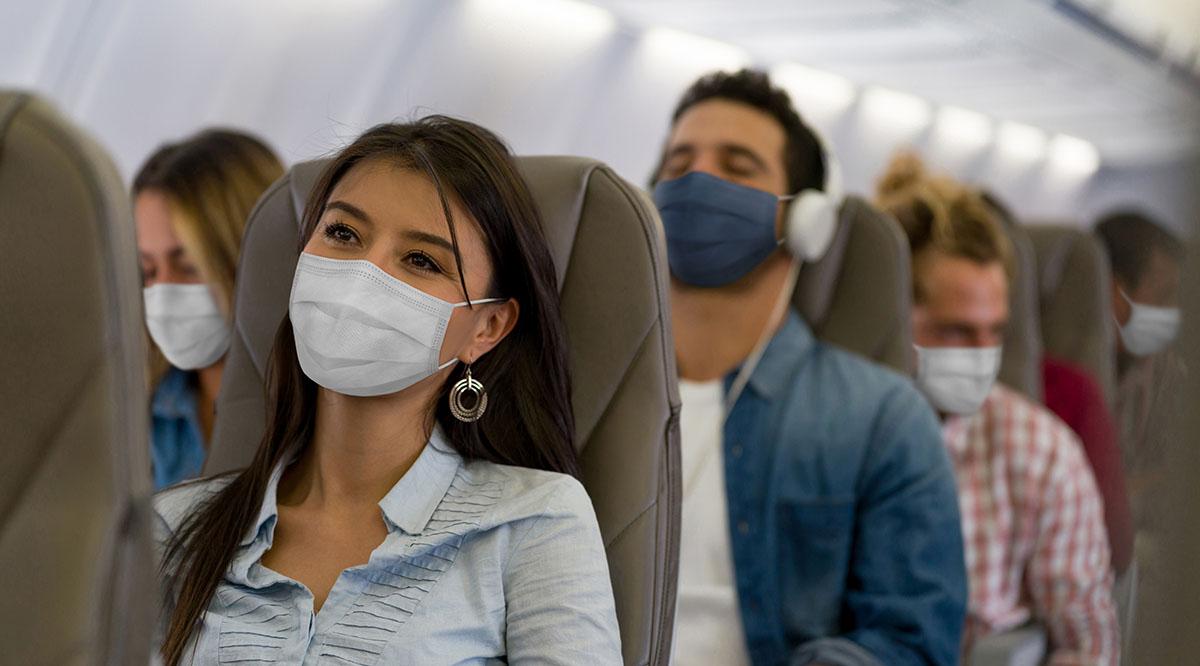James McDeavitt, MD, has a plan to see his family this Thanksgiving.
He’ll be traveling from Houston, Texas, where he is the senior vice president and dean of clinical affairs at Baylor College of Medicine, to coastal South Carolina, where he’ll meet up with extended family members ranging in age from five months to 78 years old.
The potential for spreading the virus that causes COVID-19 under such circumstances is worryingly high, McDeavitt says. Many of the things that would happen during a normal family Thanksgiving gathering — traveling from out of state; spending time inside talking, eating, and singing; hugging elderly relatives — are a recipe for a superspreading event.
That’s why he and every family member planning to attend the festivities have agreed to follow rigorous safety measures in advance of the gathering. They will all self-isolate for 14 days and get a polymerase chain reaction (PCR) test five to seven days before getting together.
But even with everyone isolating themselves for two weeks, there is always a risk of becoming infected while traveling to the gathering.
For the sake of caution, McDeavitt plans on driving the 16 hours rather than flying or taking a train or bus because he believes driving to be the safest travel option.
“We’re all trying to trade off different risks and benefits. It’s just a matter of trying to mitigate those risks as much as we can.”
Stephen Kissler, PhD
Postdoctoral fellow in the Department of Immunology and Infectious Diseases at the Harvard T.H. Chan School of Public Health
On the other hand, Krutika Kuppalli, MD, an assistant professor of medicine in the Division of Infectious Diseases at the Medical University of South Carolina College of Medicine in Charleston, will not be traveling this holiday season. Instead, she’ll be working at the hospital, where she fears she and other health care providers across the country could be overwhelmed.
“My recommendation would be for people, as much as possible, to stay home this year,” Kuppalli says.
It’s a difficult decision that families across the country will have to make as they weigh the risks and benefits of coming together in a year that has left many people craving the comfort of gatherings with loved ones at the same time that infection rates are rising in the majority of states.
“We’re all trying to trade off different risks and benefits,” explains Stephen Kissler, PhD, postdoctoral fellow in the Department of Immunology and Infectious Diseases at the Harvard T.H. Chan School of Public Health. “It’s just a matter of trying to mitigate those risks as much as we can.”
The Centers for Disease Control and Prevention emphasizes that the safest way to spend Thanksgiving this year is to stay at home and only celebrate physically with those who live in your household — perhaps including family and friends via video conference.
Still, experts say that it is possible to reduce your risk of catching and spreading the coronavirus if you do decide to travel this holiday season.
AAMCNews spoke with four experts about how to travel safely during the pandemic. Here’s their advice.
What’s the safest mode of transportation: plane, train, bus, or car?
Driving independently is the safest travel option, according to McDeavitt and Josephine Lau, PhD, an associate professor and graduate chair of architectural engineering at the University of Nebraska Durham School of Architectural Engineering and Construction who specializes in indoor air quality and ventilation.
The benefit of driving in a personal car is the ability to avoid contact and shared air with others.
“It’s going to be much harder to maintain social distancing on shared transportation,” Lau says.
Even when driving, McDeavitt recommends taking additional precautions: Make the drive in a single day to avoid overnight lodging; pack food to limit the number of stops; and maintain distance, wear a mask and face shield, and use hand sanitizer when stopping in an area with people.
Is flying safe? What precautions should be taken when traveling by plane?
Kissler says that because airplanes have very good ventilation, being on a plane is relatively safe.
A study by researchers at the Harvard T.H. Chan School of Public Health that was released in late October found that the high-grade ventilation and use of HEPA filters on planes, combined with public health measures such as universal mask-wearing and sanitizing of surfaces, make the risk of transmitting the novel coronavirus on board very low. The study was independent, but it was sponsored by parties in the airline industry.
According to the report, the risk of exposure to COVID-19 on a plane is lower than at a grocery store or an indoor restaurant.
Still, the report recommends rigorous safety precautions, such as everyone on board wearing a mask except very briefly while eating or drinking, strict adherence to distancing even while boarding and deplaning, and screening of passengers to prevent symptomatic patients from boarding.
The report notes that some, but not all, airlines have revamped their boarding and deplaning protocols to minimize crowding and contact in the aisles.
It’s worth checking with the airline to see what safety protocols they have in place and how strictly they are enforcing them, McDeavitt says. Some airlines are blocking off middle seats to help create distance between passengers, but many have stopped doing this, according to a Forbes article that compiled different airlines’ COVID-19 policies.
The risk of exposure during flight is not zero. A recent study published by Irish researchers linked a COVID-19 outbreak to air travel over the summer, although the flight was only at 17% capacity. The researchers were not sure whether the exposure happened during the flight, in the airport, or at another time before the flight, but they traced 59 confirmed cases to 13 passengers on the same flight who were coming from three different continents. The scientists concluded that in-flight propagation patterns merit further study.
To protect yourself on the flight, McDeavitt recommends wearing a regulation N95 mask if possible and adding a face shield, which is similar to the level of protection health care workers have used to successfully avoid infection while treating COVID-19-positive patients in the hospital. He also suggests skipping the onboard food and beverage service and avoiding the lavatory if possible.
Furthermore, there is more to consider than just the time on the plane, Kissler notes. It’s still important to avoid contact with people in the security line, while moving around or waiting in the airport, and in public restrooms. Travelers should also consider how they will get to and from the airport, keeping in mind the risks of riding in a bus or taxi with other people.
What about travel by train or bus?
“All of those things come with different levels of risk,” Kissler says. “The key for any time you’re spending indoors with people is making sure there’s plenty of ventilation.”
Kissler notes that trains tend to have good ventilation, and he recommends opening a window when riding on the bus.
The length of time spent indoors with others is also a factor. “Shorter is better for sure,” he says.
Many operators, including Amtrak and Greyhound, are requiring everyone to wear masks and have enhanced sanitation measures in place.
Infection rates, personal risks, and other factors to consider
Kissler says that before leaving home for any trip, it will be important to consider how much infection is spreading, both in the place of origin and at the destination. He suggests looking at the state’s latest positivity rates, which measure what percentage of overall COVID-19 tests are coming back positive. This can be a good indication of how widespread the virus is in that location. If the percentage is below 5%, that’s a pretty good sign, he says. Johns Hopkins University tracks daily statistics for each of the states and territories in the United States on its website.
But it’s also important to look at trends. If cases have been going up, they’re likely to continue rising.
“Everything we’re seeing now is a reflection of what was happening a week or two ago,” he says.
“There is no 100% safe option. … The most important part is the family conversation.”
James McDeavitt, MD
Senior vice president and dean of clinical affairs at Baylor College of Medicine
Kuppalli adds that you should be aware of the hospital capacity in the location to which you are traveling. The COVID Tracking Project by the Atlantic posts updated hospitalization data by state and also links to the state public health dashboards that may provide more detail on hospital capacity.
“Would I be OK if I had to be hospitalized?” she recommends people ask themselves. “What if I get sick with something besides COVID? Will the hospitals be full?”
These questions become even more important if you or someone you plan to spend time with is older or has a medical condition that makes them vulnerable to the more severe complications of the virus.
Kissler is not planning to travel this year, but if he were, he says he would be keeping a close eye on the transmission rates, checking on safety measures in place in the locality he’s traveling to, and making a plan to get tested early — before rising case counts increase testing wait times.
Some states and localities are also imposing restrictions on travelers. New York, for example, is requiring all visitors to fill out a travel form or face a $2,000 fine, and it is requiring those coming from states with a positivity rate of 10% or higher to self-quarantine for 14 days or test negative for COVID-19.
McDeavitt recommends making a plan with the other people you intend to spend time with and honestly assessing the risks.
“There is no 100% safe option,” he says. “The most important part is the family conversation.”

